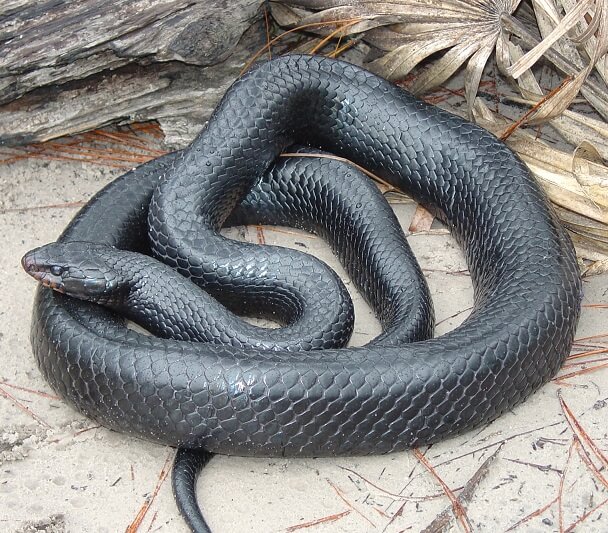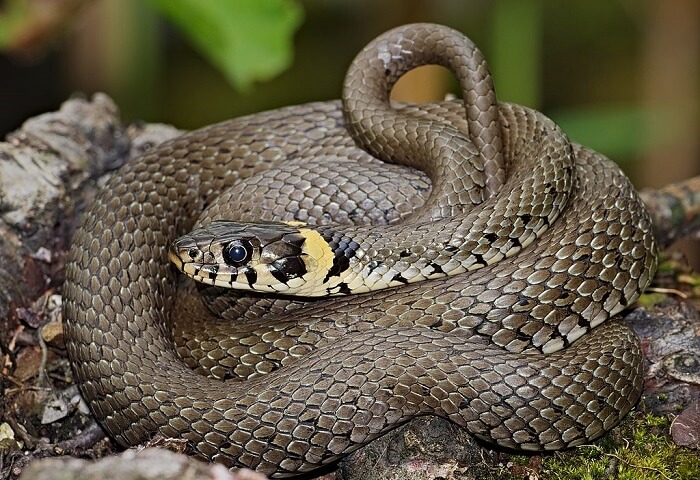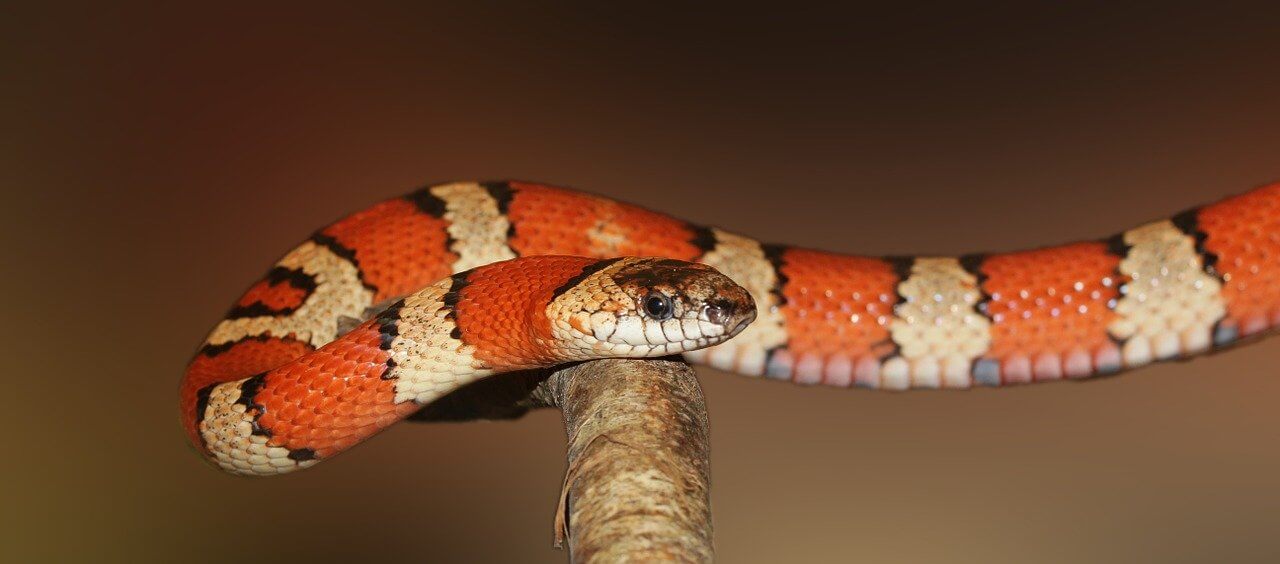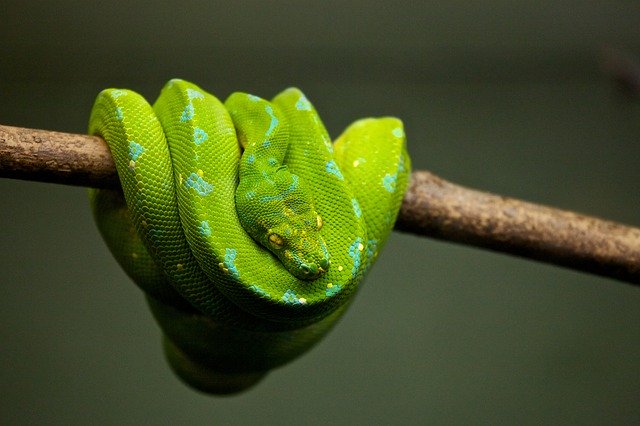What is the value of snakes? Information about the economical and ecological importance of snakes, snake products and snakes as pets.

Source : wikipedia.org
Value of Snakes
Although often feared by man and frequently killed in such events as “rattlesnake roundups” in Texas, Oklahoma, and other Plains states, most snakes are not harmful to man, and the relations of snakes and man are not usually antagonistic. In fact, snakes help man in many ways. They fill an important ecological niche and are the source of several useful products. In addition, some species also make good pets.
ECOLOGICAL IMPORTANCE
Many, perhaps most, snakes eat animals that are pests to man and his crops, and in at least some localities this is recognized and appreciated. Many farmers throughout the corn belt of Ohio to Iowa commonly keep black rat snakes in their barns and corncribs. They recognize that the snakes are better “ratters” and “mousers” than are cats or dogs. In some parts of the world it is estimated that snakes account for one quarter of all rat deaths. The snake’s great advantage is that it can pass through the same holes as the rodents, tracking them to their nests, where they may eat parents and young in a single meal.
Similarly, the common king snake is often protected in the southern United States. It not only eats mice but also other snakes, including poisonous ones. In many places the king snake’s reputation exceeds reality. Some of its proponents claim that the king snake seeks out rattlesnakes to rid the world of them. This is not true, but it is true that the king snake does not attempt to avoid an encounter with a rattlesnake, and it never comes out second best.
In the dry wheat-belt areas of the Great Plains of North America, the bull snake and various species of rattlesnakes take over the duty of crop protection. The value of the rattlesnake as a rodent killer is not generally appreciated, but the bull snake is recognized as beneficial as well as harmless. The bull snake is the only efficient and regular predator on the pocket gopher, a secretive animal that burrows through fields, feeding on the crops, and leaving holes that may cause farm animals to break their legs.
Water snakes, which can be pests in troutrearing ponds, have been found to be beneficial to fish culture under certain circumstances. In the small streams of the mountains of Pennsylvania, the common water snake has been suggested as an aid to trout fishermen. In such small streams, aquatic food is in short supply, and trout fingerlings, or young, must compete with minnows and other nongame fishes for food. The water snake feeds mainly on the slower-moving nongame fishes and by eating them leaves the available food in the ponds and streams for the fast-moving trout fingerlings. This unusual conservation measure appears to have been effective.

Source : wikipedia.org
SNAKE PRODUCTS
Leather.
Leather from the skins is undoubtedly the major product derived from snakes. Leather dealers handle tens of thousands of snakeskins each year. There are novelty items such as snake-skin Delts, ties, and wallets for men, but the major uses of snakeskins are in snakeskin handbags, shoes, and other accessories for women. Southeastern Asia is undoubtedly the main source of the snakeskins. The tough, broad, and granular skins of the Oriental wart snake (Achro-chordus) are especially valuable. The thin skins of Asian cobras are also used in large numbers, and almost any snake that can furnish a piece of skin that is 2 inches (5 cm) wide and 2 feet (60 cm) long is acceptable in areas where the cost of production is low. Python and boa skins come from Africa and South America as well as from Asia. These areas also furnish the skins of many other kinds of snakes. The few hundred rattlesnake skins produced in the United States make little impression on the large international snake-skin market.
Venom.
Oddly enough, the most valuable product of an individual snake may be its venom. The venom of snakes is used in the manufacture of antivenin for the treatment of snakebite as well as for much experimental work on blood factors and nervous conditions in man. But the difficulties of collecting venom and preserving it properly, together with the unique properties of many venoms, have made snake venom one of the most costly experimental materials. While the dried venom of a common species of rattlesnake may sell for as little as $40 a gram, that of a coral snake or of an unusual cobra may cost more than $200 a gram.
Other Products.
Since the making of snake products is a small and highly competitive business in the United States, producers who survive in it must use every part of the snake. The snake is first used for exhibition, at a price. Then it is milked of its venom, often at an exhibition, and killed. The head is chopped off and preserved or dried as a novelty item, the body is skinned and the skin sent to a tanner, and the rattles, if present, are also sold as a novelty item. The flesh along the backbone is stripped off to be canned as “rattlesnake meat,” the liver and fat bodies are boiled to provide “snake oil” for those who believe in its medicinal benefits, and the gallbladder is preserved for its contents. The remaining skeleton is boiled, and the individual vertebrae are cleaned, dried, and made into novelty pins. Such is the fate of many of the victims of the “rattlesnake roundups.” The entire snake is used, even the rattle.

SNAKES AS PETS
Only a few kinds of snakes make good pets. Some snakes, of course, are poisonous, and many of the harmless kinds are too active or too nervous to thrive under captive conditions. Still others require such exotic and unusual foods that their needs cannot be met by the pet owner. Nevertheless, thousands of snakes are kept as pets in Europe and the United States. Snakes favored as pets include the more colorful water snakes, which may be fed pieces of fish, and the American garter snakes, which will eat almost anything, including raw fish or raw hamburger. The king snakes, rat snakes, and small boas are kept by people who are able to obtain the live or freshly killed mice that are eaten by such snakes.
Capturing Snakes.
The professional snake collector, who is usually after poisonous species, carries a snake hook or a set of snake tongs to pick up the animals he finds. A person searching for a harmless pet snake, however, needs nothing but keen eyes, his hands, and a cloth bag to put the snake in.
In almost every part of the world there are snakes that potentially are good pets. The difficulty is in finding and identifying them. Some knowledge of the habits and usual habitats of the snakes is essential. Garter snakes occur throughout most of North America, in fields as well as in woodlands, but almost always near a stream. Brown snakes may be found even in populous parts of cities but only if they are sought under rubbish in vacant lots.
Care of Snakes.
Snakes are very easy animals to maintain once their basic requirements are met. These include a clean, dry enclosure that is escape-proof; a place to hide; and a water dish. Snakes must be provided with surroundings at proper temperatures, and at least some of them require a period of bright light each day. These minimum requirements may be met by a common aquarium tank with a tight-fitting, screen-covered top and a desk lamp. The cage can be decorated with gravel or houseplants, or it may be left with only a newspaper on the bottom, which makes it easier to clean. A small bottomless box or flat can with a hole cut in the side is sufficient for the hiding place. A light bulb of appropriate size furnishes both warmth and light.

Cleanliness is essential, and the enclosure should be thoroughly cleaned after each defecation, which ordinarily means once or twice a week. Food is usually the critical item. Most small snakes need to be fed once a week, larger ones less frequently. Earthworm-eating snakes, such as the brown snakes and small garter snakes, can be fed, as an alternative to earthworms, which sometimes are hard to get, the Tubifex worms that are available from dealers in tropical fish. Water snakes and garter snakes can be fed strips of raw fish or meat, although it is preferable to feed them a whole animal occasionally. Even mouse-eating snakes sometimes can be taught to eat other foods, and one pet king snake is red only the raw necks and gizzards of chickens.
mavi